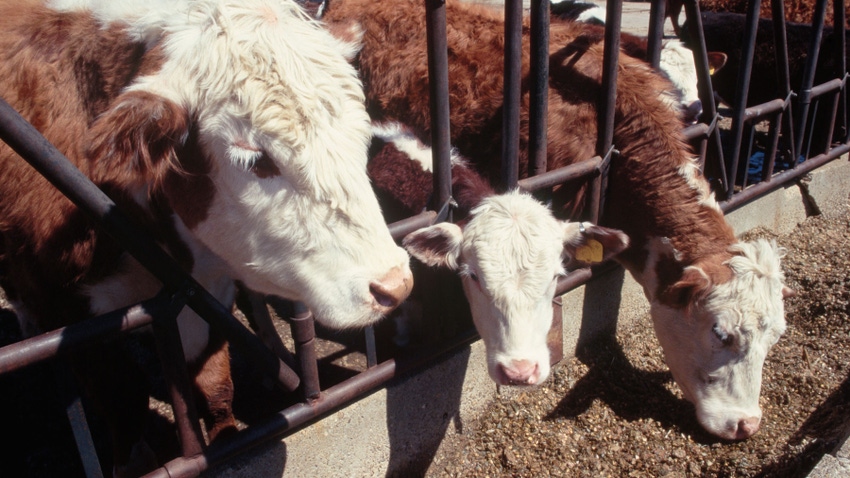June 20, 2023

by Haley Shoemaker
Dry spells have a way of making even the most seasoned cattlemen second-guess their grazing and forage strategies.
With many areas experiencing moderate drought and abnormally dry conditions to start the summer grazing season, producers are exploring options to compensate for pastures that may not be bouncing back as quickly as needed to provide ample nutrition to growing calves and lactating cows.
As of June 12, Ohio’s topsoil moisture was categorized as 35% very short and 42% short, with subsoil moisture ranked 17% and 53%, respectively. With reduced soil moisture comes reduced energy to the plant, which leads to slowed recovery of the root systems, and minimal plant growth.
Generally, allowing pastures to be grazed below 3 inches will amplify the effects of drought conditions, and will consequently make it more challenging for the stand to grow once moisture is available. Knowing this, the task is now to realistically evaluate the capacity of pastures and determine which management practices may be practical to addressing the possible nutrition gap in our herds.
For some, supplementing dry pastures and decreased forage growth may come in the form of creep feeding. Now, there are obvious points to consider when determining whether creep feeding is right for your operation and management style — for this practice to be valuable to your herd, the cost of the feed and added management must be less than the value gained.
In conversation with a local cattleman recently, creep feeding is sometimes seen as an opportunity for a “poor dam to look damn good.” However, in the case of creep feeding because of drought-like conditions, it is worth noting that while creep feed does provide nutritional value to calves, data suggests the nutrient requirement from the dam is not lessened — in other words, creep feeding is meant to help replace nutrients normally gained from forage, and the cow is still responsible for holding up her end of the bargain through lactation.
That being said, if conditions merit, early weaning may be an option to reduce stress on the cow. However, this should only be done in concurrence with the ability to then feed the calves to their desired weaning or sale weight.
Early weaning
So, how do cattle producers make lemonade from the dry weather “lemons” we’ve been thrown thus far? First comes the consideration of nutrient needs and correlating stage of the calf. For spring calves still on the dam, rations should be dense with energy and protein, as young calves will not eat large quantities of grain until later when their rumen is larger in size.
According to University of Nebraska-Lincoln Extension, a 220-pound calf would need to consume about 7 pounds of milk, creep feed and forage to gain 2 pounds per day. This may sound straightforward. However, consumption of the grain is reliant on a couple factors — one being palatability.
Many pelleted creep feeds are designed to be palatable, uniform and create minimal dust. However non-pelleted feeds are also an option, so long as they meet the aforementioned criteria. To prevent overeating, the addition of bulky grains or salt can limit consumption and keep calves from becoming over-conditioned.
For all these efforts to pay out, the implementation of creep feeding needs to make sense economically. Calculating the value of any added gain from creep feeding can be done by considering weight difference of the calves, value per pound, and costs of the feed itself, as well as labor and equipment.
Incorporating values reflective of today’s markets into the below formula can give you a glimpse of whether creep feeding may be profitable. While the following example includes only feed cost for the sake of easy math, be sure to adapt this to reflect regional values and remember labor and equipment cost should be considered as well.
For example:
A 525-pound calf sells for $2.30 per pound, and a 600-pound calf sells for $2.20 per pound.
525 lb. × $2.30/lb. = $1,207.50
Weight difference between calves is 75 pounds.
$1,320 − $1,207.50 = $112.50
$112.50 ÷ 75 = $1.50 (value of added gain/pound)
$1,320 − $1,207.50 = $112.50
$112.50 ÷ 75 = $1.50 (value of added gain/pound)
Estimate cost of creep feed at $300 per ton (adjust as needed). This is equal to 15 cents per pound.
If the calf required about 6 pounds of feed to equal 1 pound of gain, the calf would have needed 450 pounds of grain (75 pounds x 6 pounds).
What’s your return?
$112.50 − $67.50 = +$45
In this scenario, the producer would be seeing a return of about $45 per calf — individual costs and prices will influence the return or lack thereof.
There are a lot of factors beyond this simple calculation that determine whether creep feeding is right including forage condition, calf nutritional requirements and market gain. But the bottom line is that it needs to agree with your bottom line.
Shoemaker is an OSU Extension educator in Columbiana and Mahoning counties for Agriculture and Natural Resources and a member of the OSU Extension Beef Team. The Beef Team publishes the weekly Ohio BEEF Cattle letter, which is found at beef.osu.edu.
Read more about:
BeefYou May Also Like




